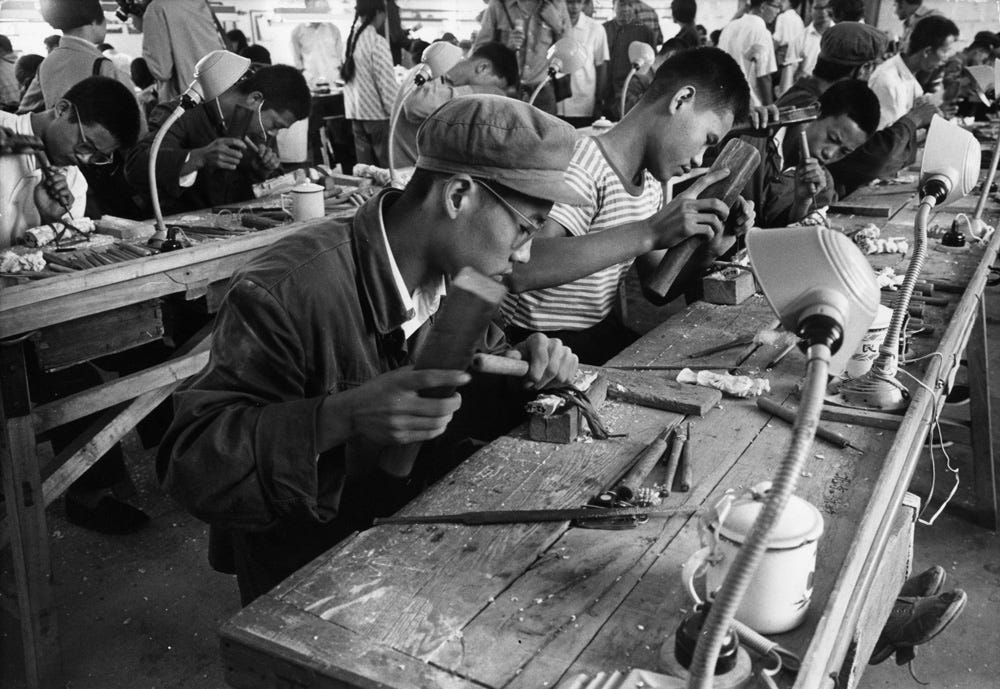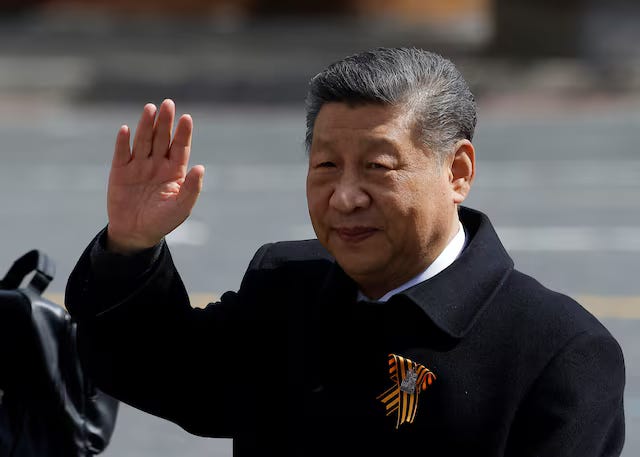Debunking: USA Built China Up; China’s Strategic Rise
A popular belief is the United States built China up to the superpower it is today.
For decades, the prevailing Western narrative—especially within the United States—has positioned China’s rise as a byproduct of American economic benevolence. From opening trade ties in the 1970s to integrating China into the global economy, the popular belief is that U.S. policy inadvertently created a rival. But a deeper examination of China’s internal politics and strategy from the 1970s onward tells a vastly different story: one of calculated, long-term planning by Chinese leadership, not passive participation in a U.S.-led order.
The Ping Era: Opening the Doors Strategically
In the aftermath of Mao Zedong’s rule, China stood at a crossroads. A fierce internal debate unfolded between ideological Maoists and reform-minded pragmatists, often called "Pingos" after Deng Xiaoping. Deng’s conclusion was clear—China could not develop in isolation. While Mao emphasized self-reliance and ideological purity, Deng saw the necessity of engaging with Western capital and technology, not out of submission, but as a means to transform China from within
.By observing the U.S. economic partnerships with Taiwan, South Korea, and Japan, Chinese policymakers saw both opportunity and cautionary tales. They witnessed how Japan’s meteoric rise was met with economic containment by the U.S. in the 1980s, a move that crippled Japanese momentum. China, in contrast, aimed to absorb Western capital without becoming beholden to it.
Strategic Use of Capital and People
While Western companies moved factories to China to capitalize on cheap labor, China’s leadership was already playing the long game. Unlike the popular Western assumption that China was merely a passive recipient of industry, the Chinese government heavily invested in its human capital. Education, technical training, and grassroots empowerment were emphasized to ensure that Chinese workers were not just factory hands, but future engineers, scientists, and innovators.
British economist David Harvey highlights this transformation in his lectures on China, pointing out how the country weathered major global financial storms—including the 2001 dot-com crash and the 2008 financial crisis—with minimal disruption. This resilience was not accidental but stemmed from economic planning that prioritized internal development and technological independence.
Forced Innovation and Technological Leapfrogging
Contrary to the idea of collaborative development, the U.S. actively restricted China from accessing critical technologies. China was banned from NASA-related tech, spatial radars, and other advanced innovations. The intent may have been to contain China’s technological ambitions, but the result was quite the opposite. China, under pressure, committed to reverse-engineering, copying, and eventually innovating its own tech ecosystem.
Today, China’s space program boasts its own space stations and satellite networks—technological milestones achieved independently of U.S. assistance. It’s a testament to a fundamental truth: a well-educated, motivated population cannot be permanently held back, especially when systematically denied access to global innovations.
The American Decline in Contrast
While China expanded its educational and technological foundations, the United States took a different path. Since the Reagan era, a shift toward for-profit education has led to what some analysts describe as the downgrading of public education. Literacy rates and educational attainment have suffered, with alarming statistics suggesting the average American’s reading level hovers around the sixth-grade mark.
This internal weakening contrasts starkly with China’s trajectory of nationwide upliftment. Rather than fostering a competitive domestic workforce, the U.S. emphasized consumerism and short-term profit over foundational investments in its people.
Cold War Strategy and Long-Term Implications
It’s important to note that the U.S. didn’t partner with China in the 1970s out of goodwill. The move was primarily strategic—to create a rift between China and the Soviet Union during the Cold War. This geopolitical wedge drove a temporary alignment of interests, but not a genuine alliance. Despite opening economic ties, the U.S. continued to withhold technology and stifle Chinese advancement wherever possible.
China, recognizing the costs of foreign entanglements, especially after the Vietnam War, consciously avoided militaristic overreach. In contrast, the Soviet Union stretched itself thin in supporting global conflicts. China’s restraint enabled it to consolidate economic power while others exhausted theirs
Conclusion: A Quiet, Calculated Rise
The story of China’s rise is not one of American enablement but one of Chinese strategic ingenuity. From Deng Xiaoping’s pragmatic reforms to Xi Jinping’s technological assertiveness, the Chinese leadership has executed a long-term plan with remarkable discipline. While the West believed it was shaping China, it was China that adeptly leveraged global systems for its own transformative goals. In doing so, it has become the manufacturing—and increasingly technological—powerhouse of the 21st century, on its own terms.








Despairing while watching helplessly US genocide in Gaza for eighteen (18) months -- Cecilia Bartoli - Gelido in ogni vena (immortal Vivaldi)
https://youtu.be/EMd7i5Bhd1E?si=6KE4HJoEhze-Ddi4
Related scholarship
https://archive.org/details/the_20200505